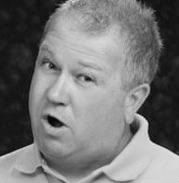Post by account_disabled on Feb 22, 2024 1:39:44 GMT -5
KLM wants to help clean plastic from the oceans Cleaning plastic from all oceans is the goal that Dutch inventor Boyan Slat (23) set for himself. His idea became a giant-scale project: The Ocean Cleanup. More than 5 trillion pieces of plastic float in the oceans, accumulating in 5 garbage patches, the largest being the Great Pacific Garbage Patch between Hawaii and California. KLM wants to help clean plastic from the oceans Where did the idea of cleaning plastic from the oceans come from? When I was 16, I went diving in Greece, and found more plastic floating around than real fish. I was shocked. I started thinking. Why can't we fix this? A 'simple' question, but it kept me busy for years. I decided to find a solution and jumped into it, developing a concept. In 2012, I enrolled at Delft University of Technology to study aerospace engineering. But I never stopped working on my concept. That year, my design won the university's Best Technical Design award, and I started The Ocean Cleanup a year later, in.
How did you develop the concept for The Ocean Cleanup? We began to investigate several questions. How much plastic is really floating? How does it move? And how can we get it out? It's Jordan Mobile Number List important not to start chasing plastic, because that could take centuries. The trick is to get the plastic to come to you. We are determined to clean up every bit of plastic in all five oceans, and with my techniques, we will be able to clean up half of the garbage patches in the northern Pacific Ocean within five years. How it works? At this point, several hundred million kilos of plastic have accumulated in the world's oceans. We have placed installations with U-shaped floating arms, measuring 2 km each, in strategic locations in the water. The natural current then pushes the plastic into the facility, where it is captured by the arms. Basically, the system works like a magnet. Every few months, an oil tanker goes out to collect the plastic that has been collected. To clean all the world's oceans, we will probably need 60 of these facilities.

How did you get the project off the ground? Thanks to successful crowdfunding and media attention, we managed to raise two million euros in three months. Big names in Silicon Valley, like entrepreneur and philanthropist Marc Benioff, also believe in The Ocean Cleanup and support us financially. So does Peter Thiel, who founded PayPal and was Facebook's first investor. The plastic problem turned out to be bigger than I first thought. I thought that two million euros and ten employees would be enough, but so far we have raised 35 million euros and hired 75 people. Cleaning up each ocean will probably require hundreds of millions of euros. When do you expect every ocean to be plastic-free? This year, in May or June, we will start with the most polluted part of the five areas in the North Pacific, where more than half of all floating plastic is found. It's so bad that the ocean current between Hawaii and the west coast of the United States has become known as the "Great Pacific Garbage Patch." Projections indicate that most plastic, around 90%, will be eliminated by 2040. Stretching at home is always the most difficult, and that will also apply to the last pieces of small-scale plastic debris.













